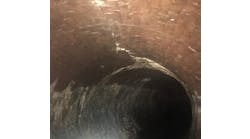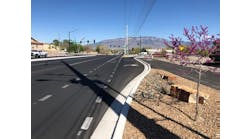The Lincoln Memorial in Washington, D.C., attracts millions
of visitors each year and is one the most high profile landmarks in the United
States. When it came time to rehabilitate the surrounding stormwater system,
StormCAD® was the choice for CH2M Hill and the Eastern Federal Lands
Highway Division of the United States Department of Transportation (USDOT).
Built between 1914 and 1922 as a memorial to U.S. President
Abraham Lincoln, the structure sits on reclaimed swamp land at the west end of
the mall and is a prominent gathering place not only for tourists, but also for
special events. As the size of crowds and events around the memorial has grown,
it has become imperative to update the surrounding Lincoln Circle and its
approaches.
This $5-10 million construction project includes storm
drainage improvements, replacement of all curbs, and new inlets as well as road
rehabilitation, signalization, and safety improvements.The design of the storm
sewer portion of the project was completed by CH2M Hill using StormCAD and
MicroStation. Michelle Humowiecki, staff civil engineer at CH2M Hill explains,
"We needed a storm sewer design package that was flexible, easy-to-use,
and powerful. StormCAD filled all of these needs for us."
Engineers began by performing an analysis of the existing
system. Using a DXF background image, calculated watershed areas, and surveyed
invert data, they were able to quickly build a model of the system in StormCAD.
Scenarios were then set up for various design rainfall events to replicate the
conditions in the field.
Once the initial analysis was developed and running, they
were able to identify where the existing system was over capacity and required
larger or additional pipes and inlets. Using color coding, annotation, and
profiles, they then were able to target the specific areas and prioritize their
design work. This model, originally set up for system analysis, then became the
base model for the design work.
StormCAD's user-friendly environment also allowed them
to "roll with the punches" much more easily as the other portions
of the design changed. Humowiecki added, "As the roadway design changed,
it was easy to adjust StormCAD to reflect the drainage impacts, which saved us
valuable time on the design."
Humowiecki also used StormCAD's inlet library to help
tackle the inlet design. The site fell under the jurisdiction of two different
governing bodies: the northern area drained into the Constitution Avenue
combined sewer line, under the jurisdiction of the D.C. Water and Sewer Authority,
and the southern area drained into the Potomac River, governed by the
Chesapeake Watershed Commission. Each governing body required different inlet
designs.
Although StormCAD did not by default have the exact inlets
required for the project, by using the inlet library editor "it was easy
to define inlet characteristics, such as dimensions, grate widths, etc., for
this specific project," she said.
Another time-saver for the group was the automatic
generation of HGL profile plots. In the past, when spreadsheets or other
software had been used, it was necessary to manually plot these profiles for
each of the design iterations. StormCAD reduced this to a few clicks of the
mouse. The profile HGL plot from StormCAD was submitted directly to USDOT.
Recently, Haestad Methods announced its latest version
release of StormCAD software for stormwater engineering. Version 5.0 builds
upon the solid foundation established with previous versions of StormCAD,
offering engineers a complete approach to storm sewer design and analysis.


